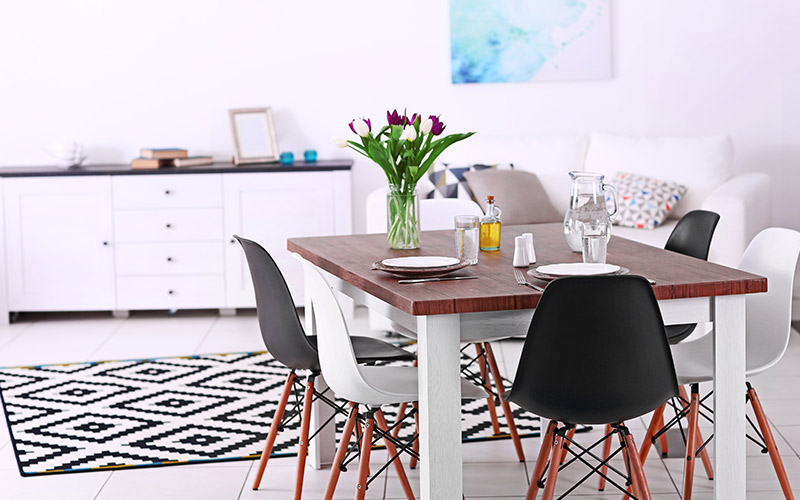In many ways, the dining room is the heart of the home – a space where we nourish ourselves, share company, eat good meals, and have great conversations. This is why choosing a perfect set of dining chairs is so important, to create an inviting space for family and friends.
One item not to leave to the last minute is the kitchen seating. Kitchen seating can include a regular table and chair set or stools, both backed and backless that fit around a high table-top or island. You can also opt for built-in dining nooks and benches that can be both free-standing and fixed in place.
Here are some factors to consider before choosing your new kitchen chairs or stools.
1. Measure your table and dining area
Begin by assessing the size and shape of your table and your room – this will let you know how many chairs you need, and what you can actually fit within the space. Oval and rectangular (or even extending) tables can accommodate more, while square tables will generally comfortably seat 4. That’s also a good number for round tables, though the lack of corners means you can fit more people.
Crucially, measure everything, especially the height of your table and the thickness of the tabletop, and any skirting or apron that the table has. Don’t rely on the listed height on sites or labels – it’s best to crack out the measuring tape and know for sure.
2. Kitchen seating proportions are important
Firstly, ensure that your new kitchen seating (chairs or stools) are the right height to go with your kitchen base units. Straining up to eat or down to use the work surface can cause back pain and prove a nuisance, having furniture that is correctly sized will ensure that sitting in your kitchen is as comfortable as possible!
Other points to consider include thinking about the space available for the seating – there is no point buying wide-seated chairs with tall backs for a small space. Stools to be used at a breakfast nook can often tuck away under the table when not in use, while chairs and stools with backs will take up more space.
3. Harmonise with your color scheme
Make sure that there is a good choice of color variations in your desired kitchen seating– mismatched colors can throw off the whole look of a room very easily. If it’s not possible to exactly match colors, opt for a strong, harmonizing contrast instead, to add a pop of vibrancy to the room.
4. Pick the right dining chair style and material
Kitchen stools and chairs are made from a wide variety of materials, in varying strengths, levels of durability, and cost. They can be plain, varnished, painted, or upholstered to varying degrees of comfort:
Metal stools are sturdy and can be elegant. They are sure to last a long time and can be painted in any color to suit the kitchen. Wood is always warm, especially when a strong-grained wood is used. Wooden chairs and stools add a degree of comfort to any kitchen, and the wood can be matched to the other units, coming in a range of natural shades.
Dining chair materials: Fabric, leather, or chrome?
– Fabric chairs: cozy and allows you to play with texture and print, but cleaning stains and such may be a concern.
– Leather chairs: sleek classics, durable, and easy to clean.
– Chrome or metal chairs: very modern and typically more lightweight, in case you need to stow them away.
5. Assess comfort and quality
Finally, and perhaps most importantly – do a quality check.
If you’re buying chairs in person, sit in the chairs, and gently put them through the motions of daily use – lean back in them, shift your weight. Or do the same with your hands, gently pushing it slightly to check its structure. You shouldn’t notice any swaying or giving way in the legs, arms, or back.

